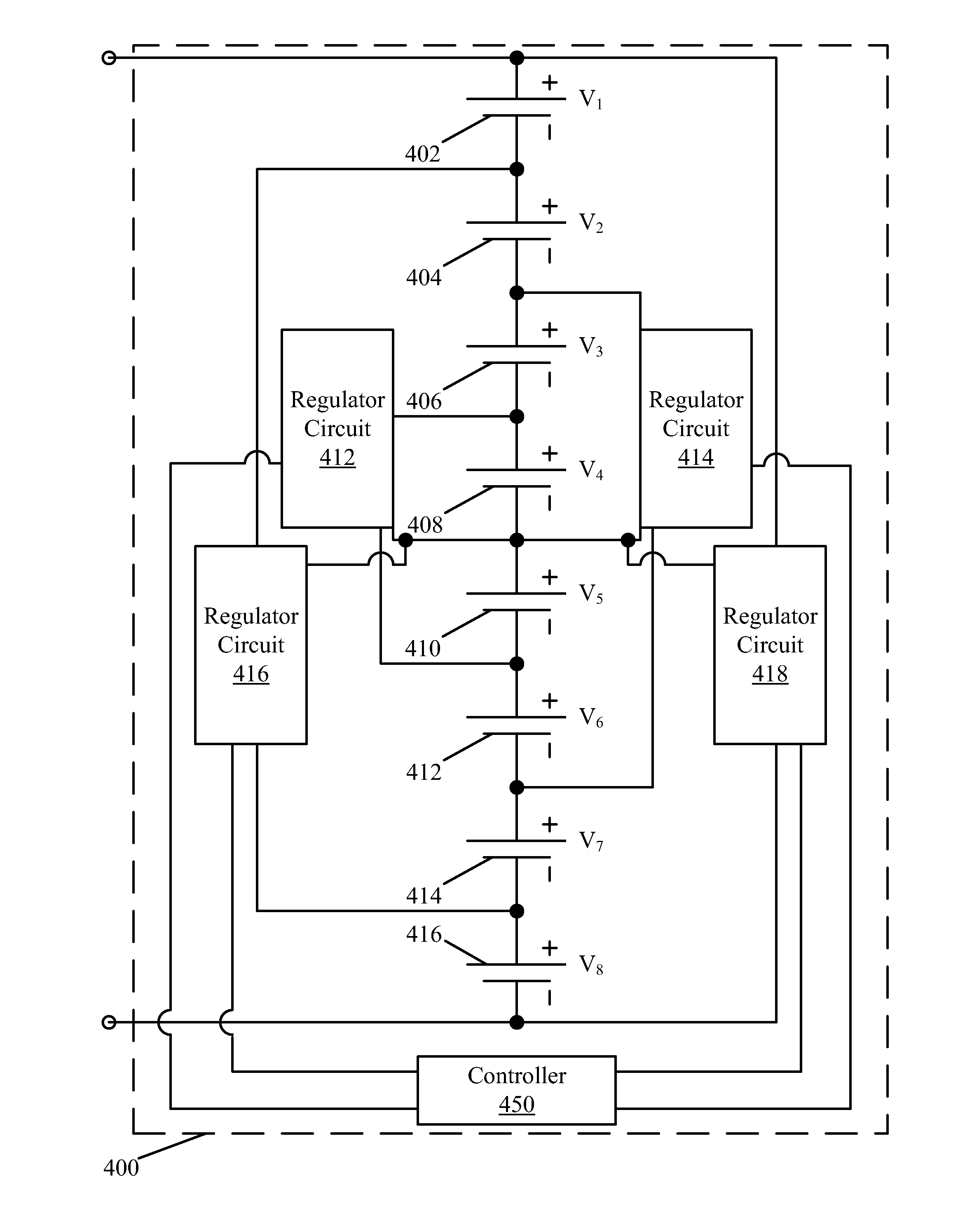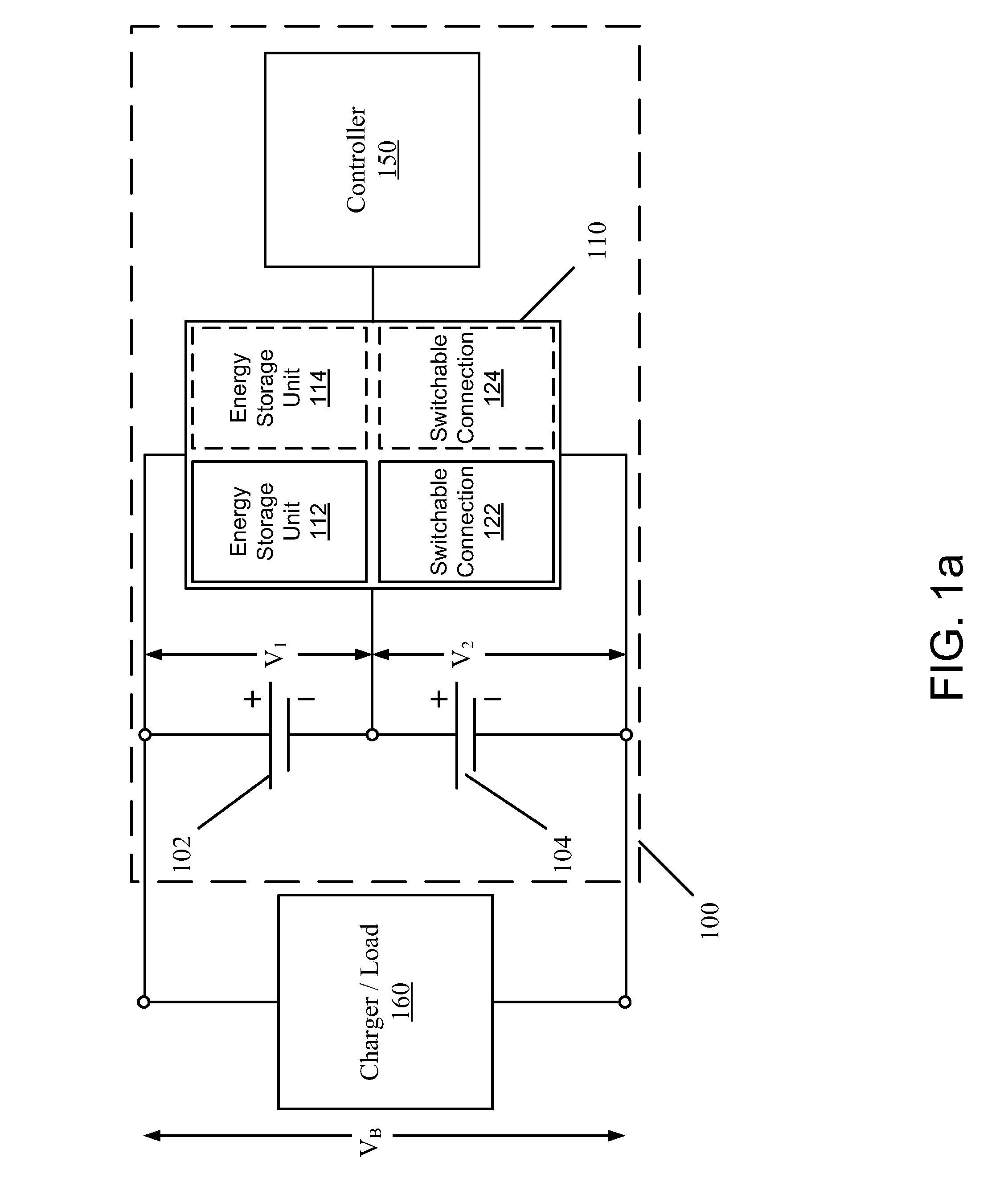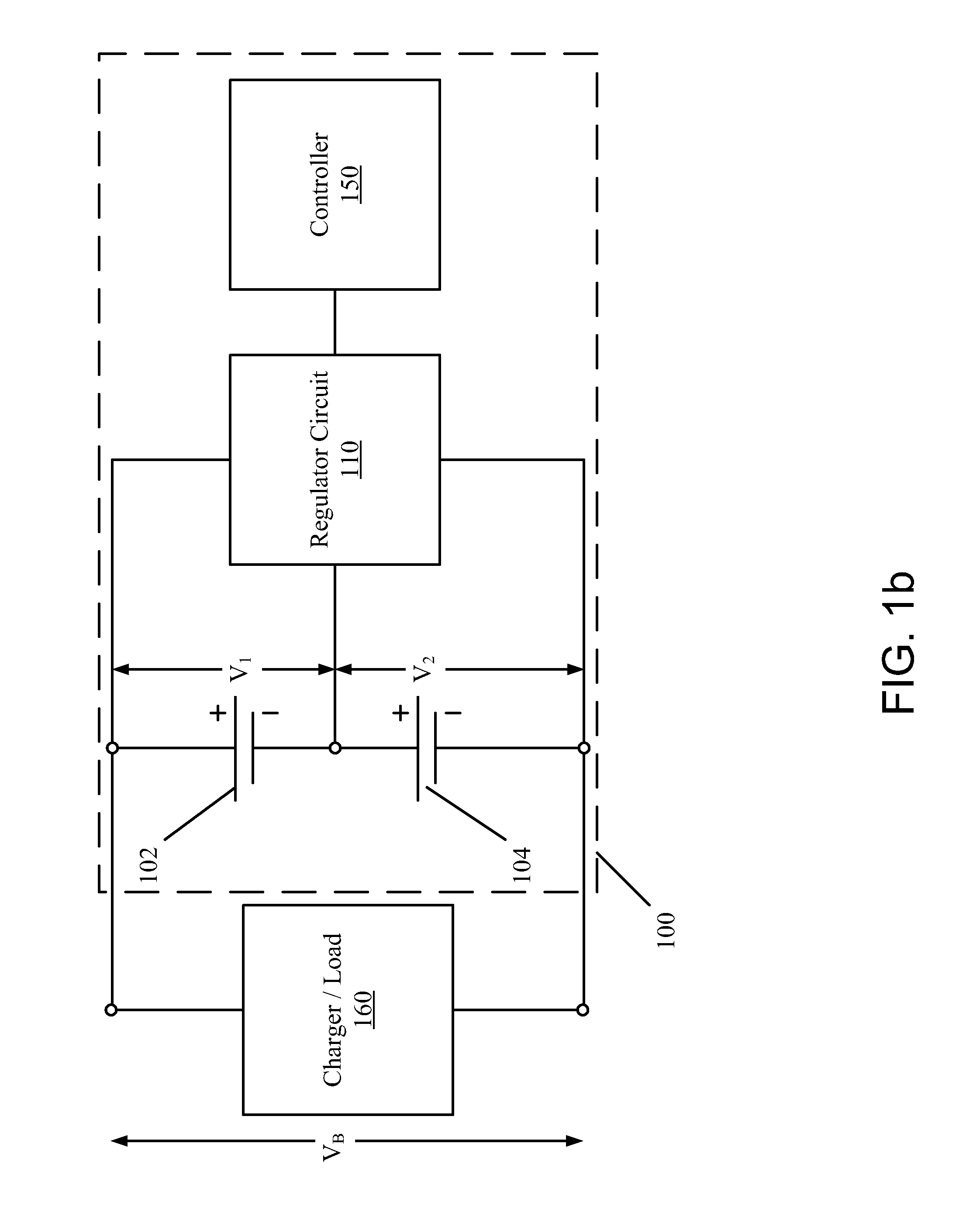Enhanced battery storage and recovery energy systems
a battery storage and recovery energy technology, applied in the field of energy storage systems, can solve the problems of reducing system efficiency, inefficient current system for balancing voltage, and inefficiency that typically only gets worse, so as to achieve the effect of minimizing the voltage imbalan
- Summary
- Abstract
- Description
- Claims
- Application Information
AI Technical Summary
Benefits of technology
Problems solved by technology
Method used
Image
Examples
third embodiment
[0033]In an embodiment, a set of batteries can include one battery, or two or more batteries. Thus, for example, when reference is made to balancing two sets of batteries, where a first set comprises one battery, A, and the second set comprises three batteries, B, C, and D, what is meant is that the voltage across battery A is being balanced relative to the average voltage across batteries B, C, and D (e.g., VA=(VB+VC+VD) / 3). As a further example of this third embodiment, when reference is made to balancing two sets of batteries, where a first set comprises two batteries A and B, and the second set comprises three batteries C, D, and E, what is meant is that the average voltage across batteries A and B is being balanced relative to the average voltage across batteries C, D, and E (e.g., (VA+VB) / 2=(Vc+VD+VE) / 3). The details of such balancing are discussed later in this disclosure.
[0034]In an embodiment, sets of batteries can overlap. For instance, given three batteries, A, B, and C, ...
first embodiment
[0081]FIG. 6 illustrates a method of operating the herein disclosed energy storage system. The method 600 may include a charging or discharging a battery operation 602. The battery being charged or discharged can comprise two or more batteries connected in series.
[0082]While the battery is being charged or discharged, a first voltage V1 across a first set of batteries and a second voltage V2 across a second set of batteries can be monitored. As such, the method 600 may include a monitor first voltage V1 operation 604. The method 600 may also include a monitor second voltage V2 operation 606.
[0083]Once the first and second voltages V1, V2 have been monitored (observed or measured), the difference (|V1-V2|) between the first and second voltages V1, V2 can be determined. This difference can be compared to the voltage imbalance threshold VT to determine if the voltage difference exceeds the threshold (|V1-V2|>VT) in a difference determination 608. If the difference is equal to or less t...
second embodiment
[0085]FIG. 7 illustrates a method of operating the herein disclosed energy storage system. The method 700 is similar to the method 600 with two differences. First, since the method 700 assumes that the regulator circuits comprise switches, the method 700 also accounts for duty cycle instructions. Thus, in the method 700, instructions may be initially provided to the switches in the one or more regulator circuits to operate at the default duty cycle (instruct operation 703). For energy storage systems where the number of batteries in each set of batteries is equal, the default duty cycle may be 50%. For energy storage systems where the numbers of batteries in each set of batteries is not equal, the default duty cycle may be greater or less than 50%. The exact default duty cycle may depend on the configuration of regulator circuits.
[0086]Second, if the difference in voltage determination 708 determines that the magnitude of the difference between the voltages |V1-V2| across two sets o...
PUM
 Login to View More
Login to View More Abstract
Description
Claims
Application Information
 Login to View More
Login to View More - R&D
- Intellectual Property
- Life Sciences
- Materials
- Tech Scout
- Unparalleled Data Quality
- Higher Quality Content
- 60% Fewer Hallucinations
Browse by: Latest US Patents, China's latest patents, Technical Efficacy Thesaurus, Application Domain, Technology Topic, Popular Technical Reports.
© 2025 PatSnap. All rights reserved.Legal|Privacy policy|Modern Slavery Act Transparency Statement|Sitemap|About US| Contact US: help@patsnap.com



